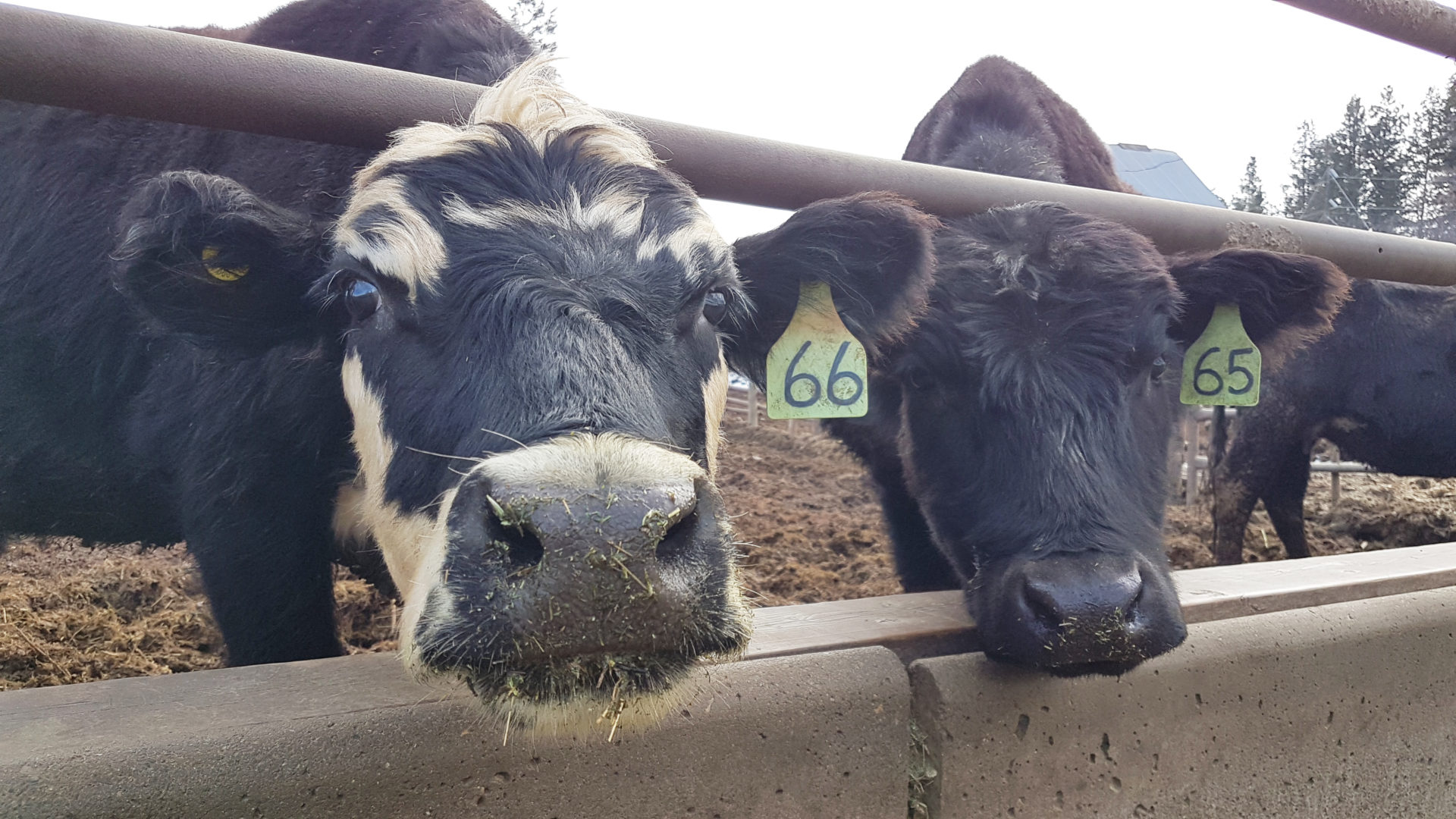WESTWOLD – Townhall meetings as the new year gets underway will determine whether or not a beef packing plant proposed for Prince George will go ahead. If it does, it will mean changes in how the BC industry finishes cattle.
Someone intimately familiar with what that could mean is BC Association of Cattle Feeders executive director Andrea van Iterson, whose family has run Westwold View Farms near Kamloops since relocating from Kelowna in 1993.
“I have this deep love for the place and the cattle industry,” she says. “I worked off farm for about eight years, but I’ve been back full-time for four years now.”
The farm includes a dairy as well as a backgrounding operation that feeds 2,500 animals each winter.
“We purchase calves in the fall, mostly through the BC Livestock Producers Co-op auctions in Kamloops, though we do get some from Alberta and some direct from ranchers here in BC,” she says.
They look for smaller calves between 350 and 500 pounds, both steers and heifers, and aim to double their weight. The steers are typically 875 to 900 pounds when they leave, while the heifers reach around 850.
The largest ones will begin to leave as soon as February and the last ones are out the door by May.
“Typically, our animals are under contract and go south to a finishing feedlot in the US,” she says. “But that depends on our cow plan each fall.”
The finishing feedlot doubles their weight again over the next six months, up to a slaughter size of 1,500 to 1,600 pounds.
While the pens will be empty by spring, the work doesn’t stop. Some grass-fed cattle spend the summer, but the operation hinges on growing its own forage.
Year-round work
“We bale alfalfa and we grow corn that we put up for silage and have some extra dairy hay that we are able to sell,” says van Iterson.
Cow manure and composted chicken manure nourishes the forage crops and is their only source of fertilizer. All the feedlot waste (sawdust and manure) is carefully composted and sold to commercial clients including landscapers, school districts and the city of Kamloops.
Costs are managed with the same eye to efficiency.
“There is no ‘let’s guess this,’” says van Iterson. “We try to buy our extra inputs like barley in the summer months when it’s a little bit cheaper and we will try to contract some so we have a pretty good idea going into the fall what our costs will be through the winter.”
Three unknowns are exchange rate fluctuations, how weather will affect the crops and price of extra feed ingredients, and, of course, calf prices.
“Some years, the calf prices are high and the cow-calf guy has a wonderful year and we are paying more for their calf,” says van Iterson. “And maybe the calf isn’t worth more out the other end, or maybe it is worth more, but we don’t take the opportunity when we should and prices drop through the winter.”
She says contracting is a way to hedge against price swings.
“We contract most of what we do, so that is our way of managing the risk,” she explains. “There is Western Livestock Price Insurance we can buy. It’s a government-run program, kind of like the crop insurance program but different.”
With respect to the proposed packing plant, she doesn’t think cattle feeders need convincing.
Excitement
“There is excitement in the feeding industry around the proposed BC packing plant,” she says. “If there is somewhere to kill cattle, we can get a supply of them.”
Westwold View has looked into feeding year-round but hasn’t done it, even though it could make economic sense.
“Any pounds that we put on the cattle we are getting paid for, so the longer we retain them that, is going to benefit us,” she says. “If we had a market in BC, we would never turn that away.”
A local packing plant would also remove middlemen from the market.
Right now, there’s a broker for every transaction. A producer sells calves at the auction mart, which takes a commission. Backgrounders feed them and when the animals go for finishing, they are going to go through a broker again as another trade occurs.
“There wouldn’t be the in-between backgrounder like us if there wasn’t money in it,” says van Iterson.
The new plant could create finishing opportunities in BC, helping keep more money at home. But producers need to see a clear benefit versus selling at auction.
“There is likely going to need to be some retained ownership through the feeding process so that they get their premium when the animal goes into the BC plant,” says van Iterson.
On the whole, however, she thinks change will come.
“It is very welcome to the feeding industry,” she says. “Build it and they will come.”


 Online platform connects producers, consumers
Online platform connects producers, consumers